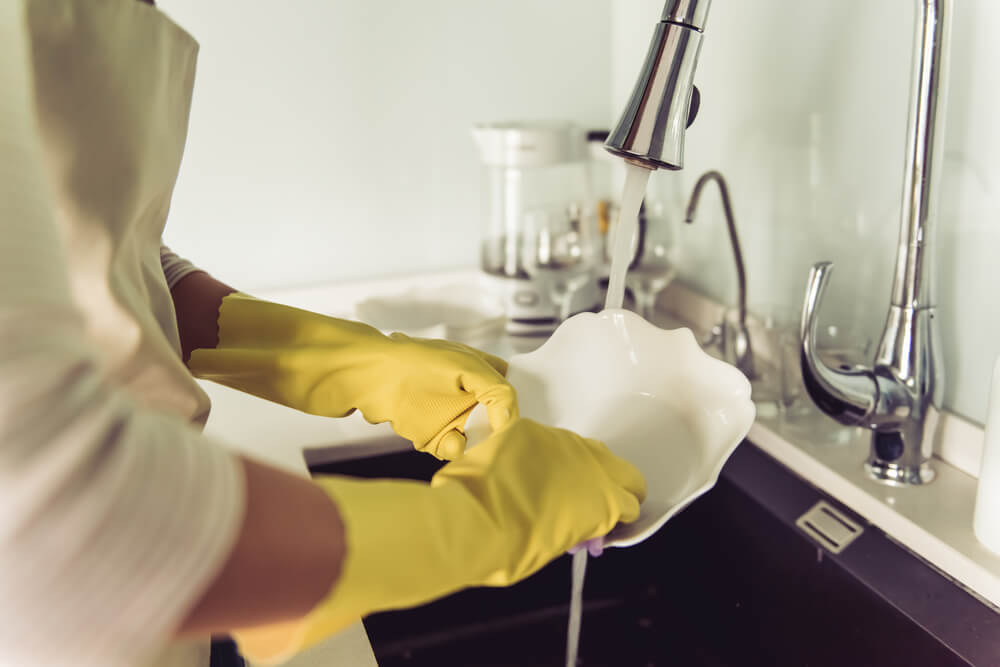
17 Feb What Are the 5 Pillars of Infection Prevention?
A successful medical facility is defined by the outcomes it produces for its patients. However, if receiving treatment exposes patients to infections, the healthcare operation risks doing more harm than good.
Infection prevention is the number one priority for medical organizations since it protects patients and employees from potential illness, costly consequences, and potential compliance ramifications. While COVID-19 has put infection prevention under a microscope for the healthcare industry, research and technology have revealed specialized techniques for successfully disinfecting public and community spaces.
Infection prevention is critical, but it does not need to be complicated. This article will examine the 5 pillars of infection prevention that all healthcare professionals and organizations can utilize to ensure patient safety.
Pillar #1: Hand Hygiene
Poor hand hygiene is a well-established culprit of infectious outbreaks. Although most people are aware of the need for proper hand washing, they don’t always practice the standard processes. Establishing effective hand hygiene requires training and competency assessment using both soap and water and alcohol based hand rub (ABHR), making hand sanitizing stations readily available, and enforcing healthy hand hygiene solutions.
Research shows that 80% of common infections are spread by hands. These everyday infections pose an acute risk in healthcare environments. Without hand hygiene, any surface can become a source of pathogens. Of the 5 pillars of infection prevention, establishing solid hygiene practices may seem basic, common knowledge. However, it’s also one of the most effective prevention methods.
In healthcare facilities, hand washing or sanitizing should happen when medical professionals enter or exit a patient’s room. Since this is the bare minimum, alcohol-based hand sanitizer should be available at the entrance and exit points. Implementing hygiene practices that go beyond the standard processes will do more to reduce infections and their spread.
For example, wearing gloves during invasive procedures and properly disposing of contaminated materials decreases infectious outbreaks. Cleaning and disinfecting frequently touched surfaces can also help. However, technology upgrades such as Ultraviolet-C light and surface barriers may help facilities decrease pathogens on surfaces and increase cleanliness levels.
Pillar #2: Standard Processes
The second of the 5 pillars of infection prevention is putting standard processes into place. An organization’s culture serves as the backbone of infection prevention. Effective coordination and communication are essential for training to produce successful solutions. Every employee could become an infection risk and must help implement standard protocols for environmental surfaces and patient care equipment processes for infection prevention.
The COVID-19 pandemic is an example of how medical facilities swiftly trained and implemented standardized solutions. Some of these processes and procedures came from state and federal governments, including public health agencies like the Centers for Disease Control and Prevention (CDC). For instance, requiring patients and visitors to wear well-fitting masks to enter buildings or receive care.
Enforcing standard processes like hand hygiene in the healthcare industry means that institutional responses to infection must preempt potential patient’s lack of knowledge or non-compliance. Posted information is necessary to communicate and clarify expectations to patients and visitors.
Standard disinfection protocols also create regimented methods that maintain high-quality prevention guidelines in facilities. High-risk areas or those with high levels of community spread infections like COVID-19, MDROs, and TB should be disinfected more frequently. Standard processes must be easy to digest and disseminate among multiple teams to ensure facilities are always properly disinfected.
Pillar #3: Measure the Cleanliness of Surfaces
Without monitoring systems and technology, medical professionals experience challenges guaranteeing clean surfaces. COVID-19 prompted innovations in disinfection technology and measurement. For instance, adenosine triphosphate (ATP) exists in every living cell and there is technology to verify whether ATP is present or absent on surfaces after cleaning and disinfection.
Combined with software applications, environmental services (housekeeping) and infection control professionals now have a quick way to assess if surfaces are safe for patients. Results of ATP testing can be captured and analyzed in digital technology to monitor the effectiveness of prevention methods that identify potential vulnerabilities.
Several factors related to surfaces can increase a facility’s vulnerability to the spread of microorganisms. These include:
- Moisture levels
- Airflow (number of air exchanges per hour)
- Number of people touching or near surfaces
- Average environmental temperature ranges that promote virus growth
- The type of surface and whether it is easily cleaned or promotes microbial growth
- Use of antimicrobial materials (e.g., silver coating) applied to or incorporated into surfaces (e.g., privacy curtains)
- Presence of biofilm on the item
Another method of quantifying cleaning effectiveness is to use a gel that glows under black light (bioluminescent) which is applied to pre-planned surfaces prior to cleaning. After cleaning is completed, the marked surfaces are checked using a black light. Although this lower tech process may be less costly up front, it also requires entering results into a computer manually and supplies that must be replenished. This method will also help to determine which surfaces are ‘missed’ or if lack of ‘elbow grease’ is an issue.
The 5 pillars of infection prevention, including measuring the cleanliness of surfaces, applies to the healthcare industry although the idea was ‘borrowed’ from the food service industry.
Pillar #4: Implement New Technologies

UV-C technology works by destroying bacteria and microbial growth. However, since this is based on ultraviolet light, people cannot be in the room while the disinfection process takes place. This infection prevention technology is a solution that removes people from the equation and prevents the spread of bacteria from people to surfaces or vice versa.
This method has already undergone testing in public restrooms and rooms in medical facilities. Besides increasing cleanliness, UV-C technology can provide a level of quality assurance. UV-C methods have been proven in multiple settings to provide added protection from the risk of organism persistence on surfaces.
Similarly, electrostatic disinfectant sprayers are an additional step taken to assure thorough disinfection of surfaces. Mobile purification systems remove more bacteria, molds, and viruses from the air.
Pillar #5: Using Emerging Solutions
Accepting what solutions already exist is not good enough for effective infection prevention. Organizations should research emerging technologies and solutions as part of their culture to determine if a new or different technology or disinfectant solution can improve outcomes. Existing standard processes can almost always be improved, and new ways to remove bacteria and viruses can increase cleanliness and decrease risk to patients, visitors, and staff.
Incorporating these practices and mindsets into organizational cultures also includes testing potential solutions. Furthermore, researching and tracking novel viruses is just as vital. New protocols and technologies often come from trying to find solutions to either existing or new problems. The rapid development of vaccines and boosters for COVID-19 is an example.
The 5 Pillars of Infection Prevention
The above-mentioned pillars are meant to work in conjunction with each other. Using one of the pillars may help make improvements, but it won’t be as successful as implementing all five. For example, standard hand hygiene processes can’t prevent the spread of viruses if people don’t have the tools to follow them. This is where standards, including equipment availability, are necessary.
Likewise, measurement methods and emerging technologies can determine whether processes are effective. They also can cover areas that humans miss due to limitations or mistakes. Together, each of the 5 pillars of infection prevention significantly contributes to reducing infections in healthcare.
Contact Infection Control Results today to speak with one of our infection prevention specialists.

